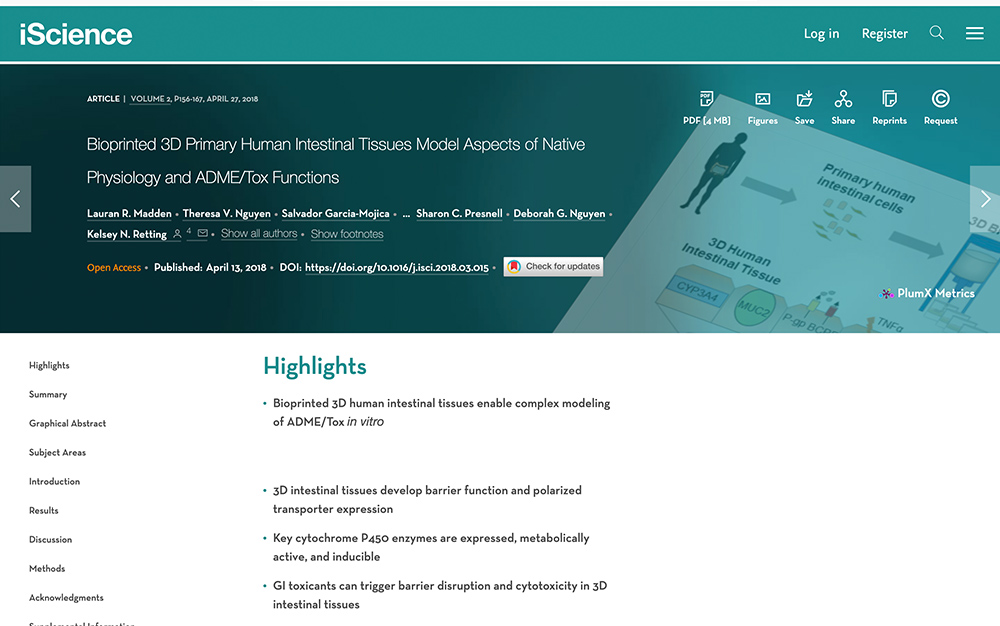Bioprinted 3D primary human intestinal tissues model aspects of native physiology and ADME/Tox functions
Publication Summary:
The human intestinal mucosa is a critical site for absorption, distribution, metabolism, and excretion (ADME)/Tox studies in drug development and is difficult to recapitulate in vitro. Using bioprinting, we generated three-dimensional (3D) intestinal tissue composed of human primary intestinal epithelial cells and myofibroblasts with architecture and function to model the native intestine. The 3D intestinal tissue demonstrates a polarized epithelium with tight junctions and specialized epithelial cell types and expresses functional and inducible CYP450 enzymes. The 3D intestinal tissues develop physiological barrier function, distinguish between high- and low-permeability compounds, and have functional P-gp and BCRP transporters. Biochemical and histological characterization demonstrate that 3D intestinal tissues can generate an injury response to compound-induced toxicity and inflammation. This model is compatible with existing preclinical assays and may be implemented as an additional bridge to clinical trials by enhancing safety and efficacy prediction in drug development.
View Publication
